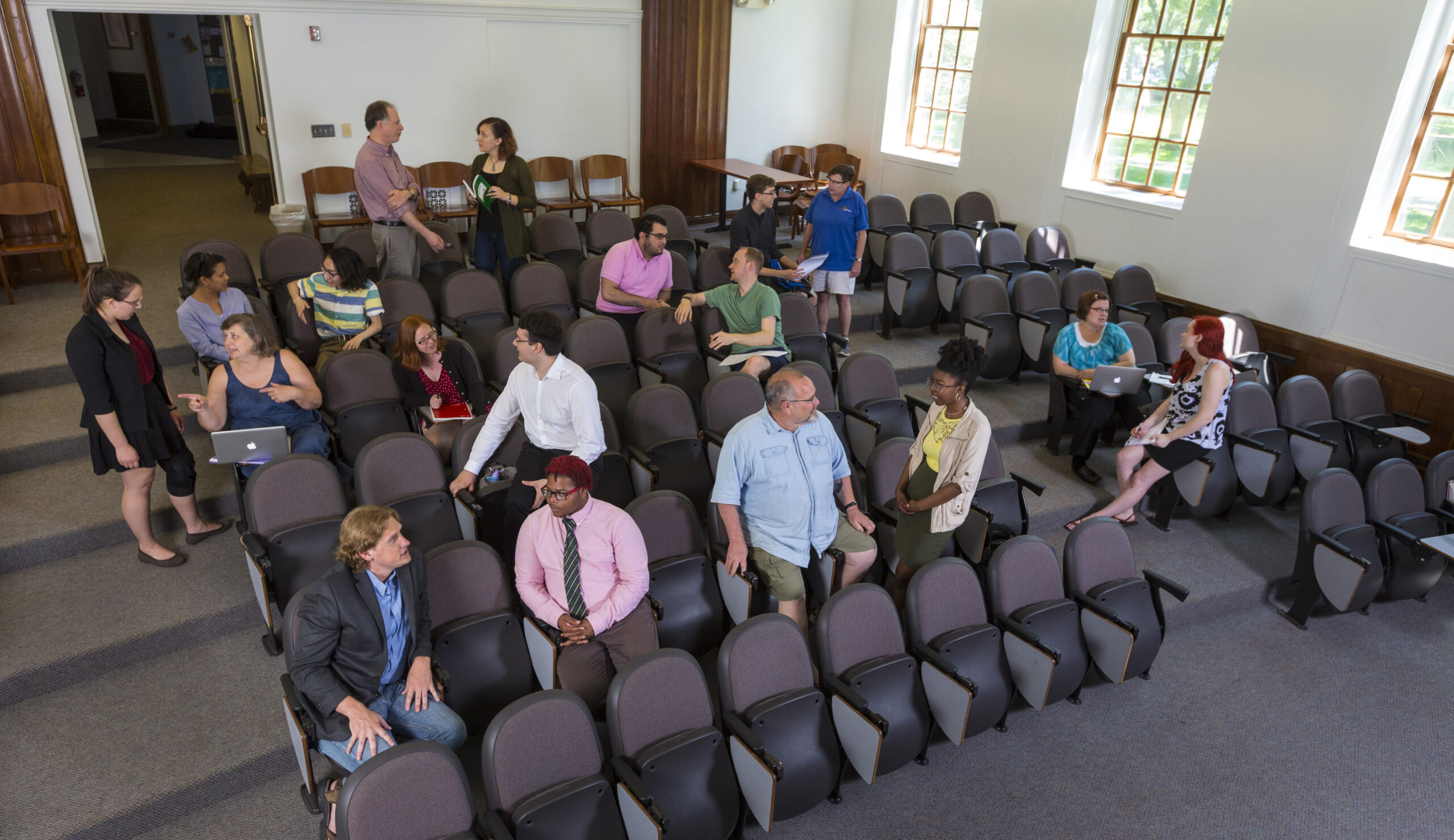First-generation college student success now has its own honor society. With 36 credit hours completed toward a degree and a GPA above 3.2, first-generation students at several colleges can now earn a lifetime membership in Alpha Alpha Alpha.
The honor society was founded at Pennsylvania’s Moravian College in 2018 and has spread to more than 20 colleges and universities across the country, including Central College in Iowa, where about 25% of the 1,100 students are first-generation.
Faculty members who were first-generation students can also join Alpha Alpha Alpha chapters at their institutions. At Central College, one goal of adding the honor society is for faculty and older students to mentor younger members of the chapter, says Mary Strey, vice president for academic affairs and dean of faculty.
“This recognizes their achievements,” Strey says. “And it also recognizes the challenges many first-generation students face.”
Higher education leaders are going beyond access, and working to ensure the long-term first-generation college student success.
At Beloit College in Wisconsin, juniors and seniors in the federal McNair Scholars Program are paid to conduct research over two summers and receive extensive support as they apply to graduate schools, including financial assistance to pay fees for GREs, applications, transcripts and travel.
More from UB: Recruiting an adult or first generation college student
“To be competitive for graduate school, you have to have experience doing independent research,” says Atiera Coleman, director of Beliot’s McNair Scholars Program and a program graduate.
The honor society and the McNair Scholars are only two of a range of initiatives higher ed leaders are undertaking to promote first-generation student success. Here are 13 additional strategies to consider implementing:
1. Visit high schools for first-generation student success
A 2015 survey by West Liberty University in West Virginia found high school visits have an even greater impact on first-gen college students, who benefit from asking questions in person.
2. Enlist first-gen students and graduates to create targeted recruitment messages
Check out the Center for Student Opportunity’s I’m First initiative.
3. Set up landing pages for first-gen students
Spanish-speaking chatbot
A Spanish-speaking chatbot is now answering prospective students’ questions about the application process, financial aid and other topics for about 40 colleges and universities.
The artificially intelligent bot, developed by the higher ed tech company Ocelot, can live on an institution’s website and communicate 24/7 with first-generation students and their families through text messages and email.
“It’s certainly helping schools signal to Spanish-speaking families that we’re interested in communicating with you,” says Damon Vangelis, Ocelot’s founder and CEO. “For us, it’s about promoting access and leveling the playing field.”
To ensure that all of the higher ed terminology is translated accurately, the chatbot is aligned with the U.S. Department of Education’s Spanish-language materials, Vangelis says.
The Riverside Community College District in California was one of the first systems to adopt the Spanish-speaking chabot. “The Spanish chatbot is huge for our institution because we serve a large Hispanic population,” says Elizabeth Hilton, director of student financial services.
See University of Nebraska-Lincoln and Northern Arizona University as examples.
4. Offer free flights
Colleges increasingly offer a limited amount of free airfare for campus visits.
For instance, University of Rochester in New York offers the Multicultural Visitation Program and Bucknell University in Pennsylvania offers Journey to Bucknell.
5. Eliminate information barriers
Send text message alerts to parents and students about registration deadlines and financial aid information.
6. Offer summer bridge programs
Saint Mary’s College of California, for example, offers a two-week residency, costing $300, for first-gen students.
7. Create a first-gen living-learning community
The University of Cincinnati, the University of Kentucky and Southern Connecticut State University have established these living spaces, which also provide supportive programming.
8. Consider boot camps
New Jersey Institute of Technology has run an intensive six-week program for high school seniors from low-income families and urban schools. Those who passed all the courses could enter NJIT.
9. Make study abroad more accessible
Kent State University in Ohio has been sending first-gen students abroad for the past several years. Administrators say the students are gaining a global perspective and achieving high GPAs.

receive extensive support as they apply to graduate schools, including financial assistance to pay fees for GREs, applications, transcripts and travel.
10. Ensure appropriate first-year placement
First-gen students are often mistakenly placed in remedial courses that can extend their college experience by two to three semesters or more. Long Beach City College’s Promise Pathways initiative places students in English and math courses based on high school performance, rather than standardized test scores.
More from UB: How to recruit, engage and retain Generation Z
11. Offer microgrants to prevent dropout
Georgia State University’s grants are aimed at supporting low-income students”many of whom are first in their families to attend college.
12. Use data consistently to monitor the need for interventions
Georgia State University’s GPS Advising system is updated nightly and tracks more than 700 alert factors. It automatically contacts students and advisors when anything is amiss. In the first year of use, administrators saw a 14-point rise in students’ likelihood for graduating on time.
13. Establish first-gen student organizations
Campus clubs foster networking and community, and also help with recruiting, mentoring and retention.
Massachusetts Institute of Technology’s first-gen program, FGP, was initially student run, but moved to the undergraduate advising office when it received greater institutional support and a dedicated staff member.
More from UB: Supporting first-gen college students

